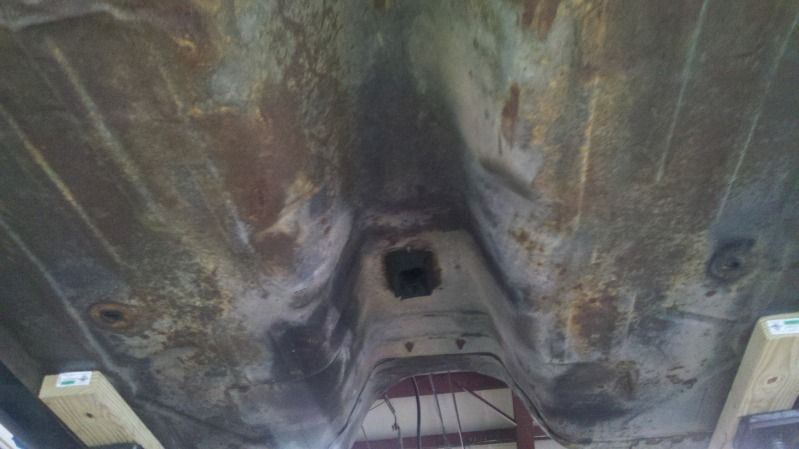According to the Camaro National rules, to get into the Legends class: “Entrants who had their car approved by a Legends judge; their entries and completed pre-qualifications sheets will be received from February 2nd until the class closing date or the class is full. No more than five (5) new cars will be accepted in any year unless there is room in the class and approved by the American Camaro Association and the Legends Concours judges.”
For 2013 there is no way it will be completed in time to have a judge check it before entering. Therefore, I am planning on trying to enter the Bowtie Class.
I think this is a better class for me anyway. There are many details that judges expect to be a certain way. For example, in the Legends class, the underbody is expected to be a uniform 30% gloss black with a small amount of overspray. Every original underbody picture that I have ever seen is not uniform 30% gloss black. There is usually a lot of gray primer, black (and some cars have red oxide primer) and then overspray. A lot of the underbody was done my hand. Almost all of the pictures I have seen look like a “mess”. I don’t think that GM took a lot of care to make the underbody look nice and tidy and I don’think the original owners back in 1969 cared one bit about the underbody.
I think that looking at wild variations on the underbodies made the folks in charge of judging decide that it should be uniform to make the judging consistent.
I took a lot of pictures of the underbody as I found it on my Z/28. It had a lot of gray primer and I am going to make my car look as close to the original pictures as I can.

PS: For anyone interested in how GM painted the underbody on a 1969 Camaro, the GM Heritage Center archives had a document titled “1969-Chevrolet-Camaro.pdf”. On page 49 (as labeled on the page) is “Exterior Paint Process”
which is written up as:
EXTERIOR PAINT PROCESS
1. RUSTPROOFING. Assembled car bodies are chemically sprayed to clean and etch the metal surfaces for corrosion resistance and paint adhesion. Unassembled sheet metal parts follow the same process.
2. BODY AND SHEET METAL PRIMERS. Four corrosion resistant primers, specially formulated are had sprayed on the body in areas where rust might develop. Lower areas considered especially vulnerable are coated with another rust inhibiting compound.
3. PRIMER COAT is applied to all outside and inside surfaces of front fenders and hoods. The parts are mechanically dipped or flow-coated to insure coating in all seams and secluded areas, and baked at 390 degrees F for 30 minutes. A coat of sealer is then applied by hand spray to all surfaces requiring another coat of lacquer.
4. FLASH PRIMER AND PRIMER-SURFACER COATS. An air-dry flash primer coat is hand sprayed on surfaces below the body belt line. Then a gray primer-surfacer coat is hand sprayed on all outside surfaces of the body and oven baked for 45 minutes at 285 degrees F.
5. INITIAL SANDING. Power wet sanding, followed by hand sanding, is done on all body surfaces requiring lacquering. This insures a smooth surface for the lacquer finish. To remove the water, the body is wiped and run through an infra-red oven.
6. LACQUERING. Three coats of acrylic lacquer are spread on the exterior surfaces of the body and sheet metal parts to build up a finish of the required thickness for each color.
7. INITIAL BAKING………….etc through step 11.
and when I shorten this up only to look at the underbody stuff, can be shorted to:
2. Four primers on underbody in specific areas.
4. Air-dry flash primer coat is hand sprayed on surfaces below the body belt line. Then a gray primer-surfacer coat is hand sprayed on all outside surfaces of the body.